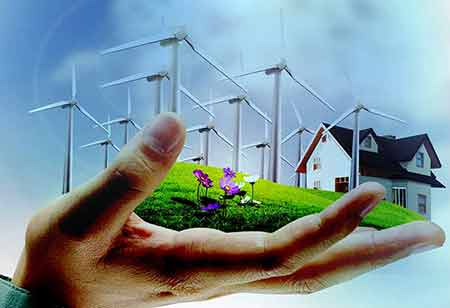Thank you for Subscribing to Energy Business Review Weekly Brief
Managing Surplus Renewable Energy With PTG.
Power-to-gas (PtG) is a method that converts chemical bond energy stored in a combustible gas into electricity if the excess electricity comes from the renewables.

By
Energy Business Review | Thursday, June 02, 2022
Stay ahead of the industry with exclusive feature stories on the top companies, expert insights and the latest news delivered straight to your inbox. Subscribe today.
Europe, which delayed the dominant position in power-to-gas technology, has advanced to a level where the technology helps store surplus energy.
The EU strives to transform its energy systems using eco-friendly technologies in the race to reach total clean energy production. In the latest paper by the technical university of Regensburg, Germany, it was acknowledged that the EU is chief in the power-to-gas technologies with 153 projects, covering up to 80 percent globally.
Power-to-gas (PtG) is a method that converts chemical bond energy stored in a combustible gas into electricity if the excess electricity comes from the renewables. Nonetheless, if it is not used in suitable conditions, PtG can help several European countries achieve climate targets while utilizing the existing infrastructure.
Therefore, it is no surprise that the EU has invested more than €150 million ($165 million) in PtG projects in the last decade. Germany has been the world’s master in the installed capacity of PtG with more than 40 megawatts (MW), followed by Denmark, which has an installed capacity of PtG of 20 MW capacity.
Northern Europe has displayed an increasing interest in PtG mainly due to reaching the climate targets and outgrowing the technical complexities presented in the region in the case of power distribution.
The proliferation of renewable energy has brought forth its challenge to the utility companies. Renewable energy is mainly produced from wind farms in the northern part of Germany and is primarily consumed in the south. Moreover, electricity production from renewable sources is susceptible to seasonal changes.
The extra electricity produced by the seasonally available renewable energy sources is stored using PtG technology. Therefore, it can avoid uneconomic investments to reduce the capacity of the previously installed renewable plants.
In Europe, The gas production market fell by 8%, forcing the EU’s dependence on natural gas to rise by 80%.
The PtG technology is considered the best to convert electricity into hydrogen; almost 95 percent of this comes from wood or fossil fuels. The hydrogen produced can be utilized to pump into the gas infrastructure. Still, this does pose a challenge, as essential restrictions need to be abided, as methane should be continued as the dominant gas in the grid.






